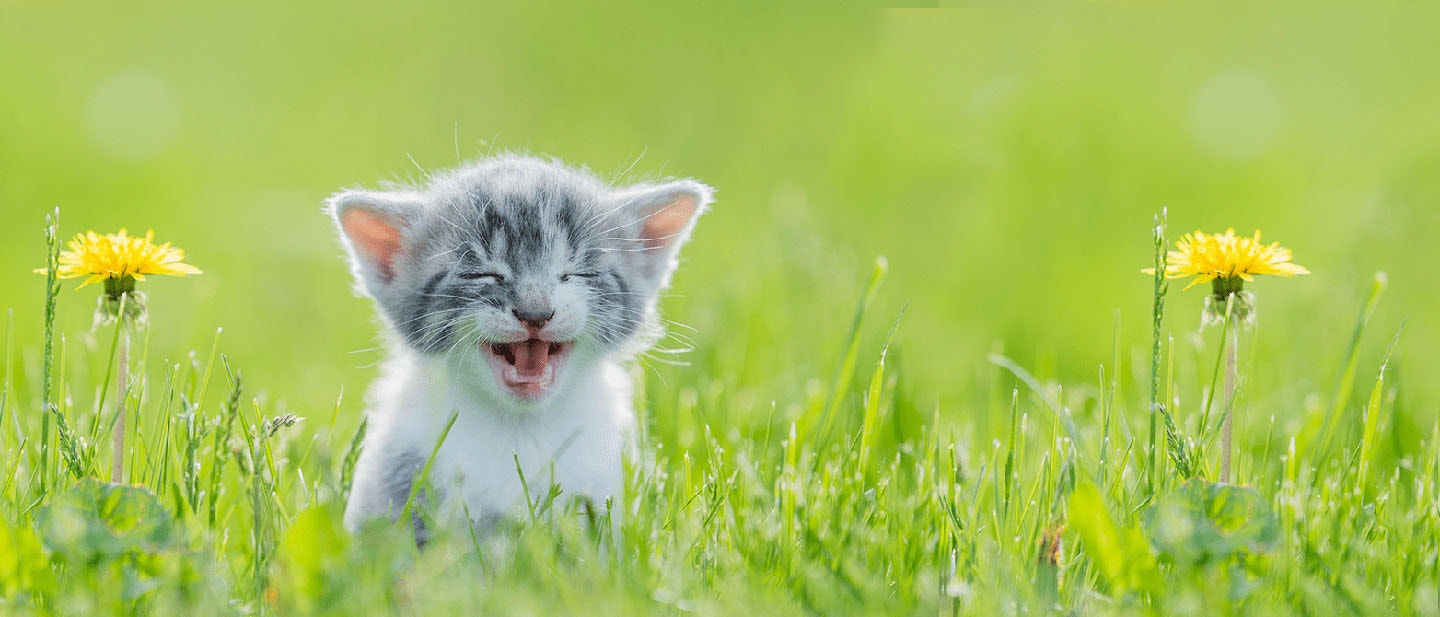
Understanding Kitten Sounds and Purring
Ever wondered why do kittens purr or how do kittens purr? Cats are vocal creatures and use a wide range of sounds to communicate, each with a distinct meaning. From the very familiar kitten meow sound to gentle kitten purring and discrete yowls, felines use different forms of vocalisations to express their emotions and needs. Understanding the different sounds your fur buddy makes can help you better connect with and care for your pet. Whether they are seeking attention, expressing contentment, or signalling discomfort, each sound provides insight into what is going on in the little heads of your furry. By learning to interpret these sounds, you can strengthen the bond with your cat and ensure their well-being.
Why do cats make weird noises?
Cats can make a wide variety of weird noises and sounds that mean different things. For instance, you might find your feline “chattering” when they see birds or small animals, a noise that displays hunting instincts and frustration. Similarly, a furry “trilling or chirping” means it is greeting you, and “hissing, growling, or yowling” can indicate fear, aggression, or discomfort. Cats also make some unusual noises when they are in pain or trying to communicate specific needs to their owners. Such vocalisations might seem weird to humans, but these are a normal part of a cat's behaviour, reflecting their complex emotional and social nature.
What Do the Different Cat Noises and Sounds Mean?
Why do kittens purr or how do kittens purr? The sounds cats make often have different meanings and emotions. From the common kitten meow sound to more unusual sounds like trilling or chattering, these noises serve as a vital part of a cat's communication toolkit. Understanding the different sounds your beloved furry makes can provide valuable insights into their feelings, needs, and overall well-being. This section explores the various noises a cat can produce, explaining what each might mean. Whether your cat is expressing contentment, seeking attention, or signalling distress, decoding these sounds can help you respond appropriately and strengthen your bond with your furry friend.
Meowing
It might surprise you to know that cat meow specifically to communicate with humans! Kitten meowing can mean a lot of things depending on the tone and pitch.
Purring
Why do kittens purr or how do kittens purr? Kitten purring typically indicates happiness and contentment, but cats also purr when in pain or stressed. It is a continuous sound that soothes and calms felines.
Chirping
Chirping is a high-pitched sound cats make when they hunt. Often resembling a bird's call, chirping expresses excitement or frustration.
Trilling
Trilling is a soft, friendly sound often used by cats as a greeting or to get attention from their favourite humans.
Teeth Chattering
Teeth chattering usually occurs when cats hunt. It is a rapid jaw movement accompanied by clicking sounds, it’s often used by cats when they spot birds or small animals.
Growling and Hissing
Growling and hissing are warning sounds, indicating fear, aggression, or stress. They are defensive responses, often used to ward off threats or express displeasure.
Spitting
Spitting is a short, sharp sound that generally signals extreme fear, anger, or a threat response.
Yowling and Howling
Yowling and howling are loud, prolonged sounds that mostly expresses distress, pain, or a call for attention, but can also be used as mating calls.
Caterwaul
Caterwauling is a loud, wailing sound often associated with mating behaviours in cats. It signals sexual readiness or territorial disputes, usually made by unspayed females.
Wailing
Wailing is a prolonged and sorrowful cry demonstrating distress, pain, or confusion. It can also represent loneliness among sexually active cats.
How to Calm a Crying Kitten?
Crying kittens sound may mean that your furry is in distress, pain, or just upset and needs comfort. To calm your fur baby, try holding and gently stroking it, mimicking a mother cat's grooming. Such gentle nurturing can help foster a sense of security thereby calming the kitten. Offering the kitten’s favourite treats or using toys to play with your furry can also help distract and calm a crying kitten. However, if nothing else works, consult your vet as there might be underlying physical discomfort causing the kittens crying sound.
How to communicate with your kitten?
Communicating with your kitten involves understanding and responding to their vocal cues and body language. Pay attention to the sounds kitten makes and observe their body language, such as the tail position and ear movement. Use a calm and soothing voice when talking to them, and be consistent with your commands and trainings. Gentle petting and playtime also help in building trust and understanding. Offering treats and rewards for good behaviour can reinforces positive communication as well. By being attentive and responsive, you can create a strong bond with your kitten.
